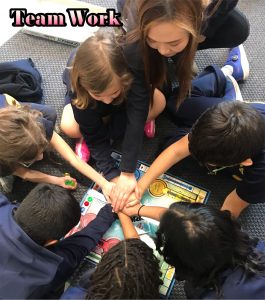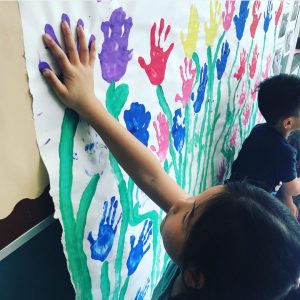How important is clear communication?
Teachers need to communicate and talk to students about how it feels to achieve proficiency (Holland, 2006). The diverse learner’s brain has a reward system. If and when the students do well at a challenging academic, behavioural or physical task, the brains get a shot of endorphins. When teachers value the efforts of the students with A’s, monetary rewards, stickers, gold start and incentives, it cripples the intrinsic motivation of the student. The teacher needs to not only look beyond that but also to focus on achieving proficiency and praising the effort, process and strategies that lead to success.
How important is trust between students and the teacher?
The teacher not only needs to have a positive relationship with the students but also foster positive relationships among each other (Felver, 2015). The goal is not to have exclusive groups or cliques. The shy, new or insecure student feels left out. The focus needs to be on cooperative learning and a structure that focuses on class building and activities that promote that they are all in this together. These activities give the students a reason to come to school because it is fun.
A controversial strategy is for the teacher to be vulnerable to their students. What does it mean to be vulnerable as a teacher? What is the boundary line? Some posit that there needs to be some distance to create respect. However, being vulnerable builds trust between the student and the teacher more so than any other approach. It shows that the teacher is human and makes them approachable. The teacher is sending a message that we are humans and we all make mistakes. We learn from them. This also allows the teacher to have a growth mindset and to evaluate themselves. Mistakes need to be embraced in such a way that students learn by taking risks to allow mistakes to happen is a way of learning thus, growth and maturity are a result of learning from mistakes. A simple mistake like a misspelling a word can be talked about as to how glad you are that you made that mistake, and it taught the student something.
Further understanding of vulnerability is necessary in terms of cultural context. I have been once told by parents that in their culture, they are not to teach or show their vulnerability because it’s a sign of weakness. This family did not want their child to see the teacher’s vulnerability nor to be taught to show their vulnerability. This goes back to my question of what is the boundary line? This scenario case could be another inquiry project because it is very likely teachers can come into differences in a cultural context dealing with a vulnerability that may be unacceptable for some cultures. How should teachers handle vulnerability and remain authentic while being respectful towards other cultures?
How important is it to know the stories of the students?
The teacher needs to let the students get to know them (Roose, Wendelien, Vanderlinde, & Avermaet, 2019). A diverse learner can come into the classroom with preconceived perceptions that can become an obstacle. The perfect perception needs to be that the teacher is a three-dimensional human being and not a strict or disciplinarian. The researcher recommends giving the students a quiz about you and your background, your values and what do you do for fun outside of teaching. After the quiz, the teacher could have a slideshow about themselves, their family and talk about values that are important to them. Personally, I do not like the word “quiz” rather I would replace this word with “wonder” or “interest”. I wonder… or I am interested in knowing…
It is vital that the teacher knows about the student’s culture, interests, personalities, goals, mindsets, learning styles and interests as it would help the teacher reach, connect and teach the student (Blanton, 2002). The teacher can do this by educating themselves about the student’s culture, talking to them, attend extracurricular activities, have them do a survey about what fascinates them and have team building events (Blanton, 2002).
The importance of humour in the classroom?
Laughter is a powerful tool that engages the students and helps them learn (McNeely, 2019). Teachers can use examples from the internet on misspelled words to show problems with English. Teachers who use humour in the classroom help the student feel at ease and they are eager to learn. The students do not feel stressed and their creativity gets better.
A biology teacher who teaches about the cerebellum which is responsible for balance, the teacher can trip over their backpack and make a joke about it. Research shows humour lights up the brain and boosts learning and makes memories stronger (McNeely, 2019).
Teachers are using humour through parody, games and funny voices. The end goal of a teacher is to be effective and help the students become better learners. Humour is the fuel that helps students learn better.
The teacher needs to use humour or different strategies to communicate with the student that speaks their language. Even simple information like rules and regulations can be conveyed by speaking the language of the student. The teacher needs to remember that the students are new to their teaching style and expectations. There should be no assumption that the student knows how to take notes or collaborating with others.
https://www.youtube.com/watch?v=XaG678AzVs4#action=share
Reach out to fellow teachers?
It is important to develop relationships with fellow teachers that are positive, uplifting and empowering. Teachers need to give all their energy into the classroom. However, workplace relationships boost morale and respect, trust and collaboration among teacher benefit everyone (Donahue, 2016).
Donahue (2016) recommends that form a birthday committee and recognize every adult at the school. Connect with one another and practice empathy and compassion for one another. These values are game-changers. Always be positive towards one another and celebrate each other’s accomplishments. Show up at all the social events like barbeques, golf tournaments, and baby showers. When you show up you belong to a group and build trust. Finally, never gossip as this destroys relationships and is completely unprofessional.
How to allow students to create a creative space?
Success needs to be celebrated and celebrate small wins regularly to allow for bigger wins. An achievement by a student needs to be recognized. It is not to be promised in advance.
The learning needs to be relevant to the happiness and success of the student. The teacher, when teaching the subjects, has to adapt the lesson to the interests of the diverse learner. The interests, talents and learning styles of each student is important. The end result is that diverse learners are more engaged and attentive.
The diverse learner needs to feel good about themselves, and this is an intrinsic motivator especially for grade one and two students. Positive actions help students feel good about themselves through positive thinking and to stay away from negative thoughts and actions.
